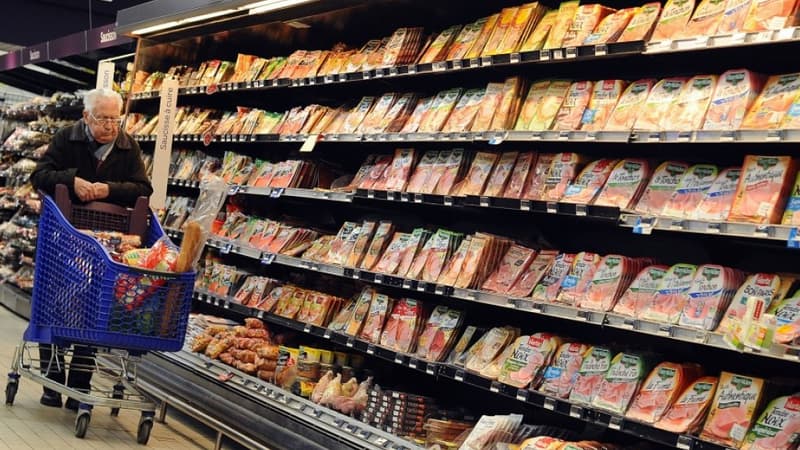A “red march”. This is what the majority of supermarket managers predict, forced to apply the new price increases from their suppliers as well as, on their blog, sector specialist Olivier Dauvers. But should we really expect the worst?
Invited this Monday from BFMTV, the Economy Minister wanted to be reassuring. Bruno Le Maire rejects any risk of “red march” in hypermarkets and supermarkets. But who sees correctly? The pessimists or the optimists? What we can say without taking too many risks is that, for the month of March, the indicators are not green.
Prices that keep rising even before March 1
First, there is the entry into force, on March 1, of new prices for national brand products. Negotiated for weeks with manufacturers, they will lead to further increases. However, this impact should be gradual, all increases do not apply overnight, as the head of Lidl in France, Michel Biero, clarified a month ago on BFMTV.
Then there is what is called the base effect. March 2023 prices will be compared to those on the shelves a year earlier. But at that time there was no label waltz in supermarkets. The inflationary trend really gained strength during the second half of 2022. Therefore, it is almost impossible for the price rise curve, at an annual rate, to reverse before this summer. Especially since, since the beginning of this year, weekly shelf price readings have always shown far more ups than downs.
1 in 4 households buy less food
So whether March is “red” or “orange”, we will most likely have to wait a bit longer to see inflation really start to come down. The Nielsen IQ institute, for example, has a peak in June with, for daily purchases, prices that will be 15% higher than in 2021. In concrete terms, this means that, on average, a household that would like to continue buying Putting exactly the same products in your shopping cart, you should spend €790 more during the year than in 2021.
But not everyone is prepared to face such an additional expense. As expected, more and more families are cutting back as much as possible and, therefore, also, for some, in their food expenses. Still according to Nielsen IQ, this is the case for one in four households. And this trend is also found in the sales of hypermarkets and supermarkets.
Billing increases but sales volume decreases
The IRi institute measures the evolution of its turnover every week. And his observation is that households go to checkout with a basket or cart that is a little less full. If we take the average of the last 52 weeks, sales fell, in volume, by 5.2%.
This means that, compared to everyday products that, on average, have seen their price increase by more than 13%, the French have made decisions that have resulted, always according to the IRi, in an average increase in their spending of more than 8%. . And it is more this drop in consumption that should worry supermarkets.
Source: BFM TV


